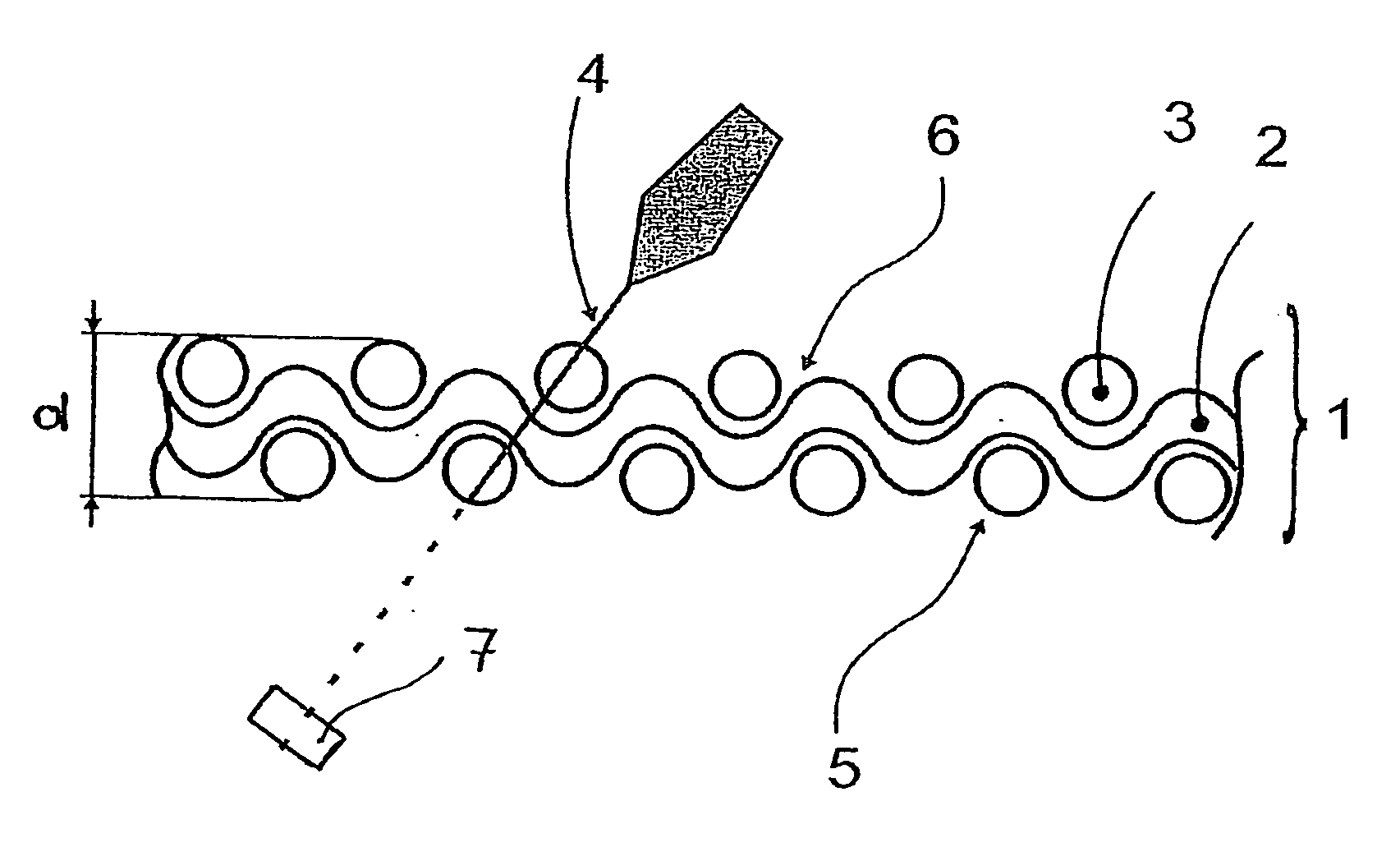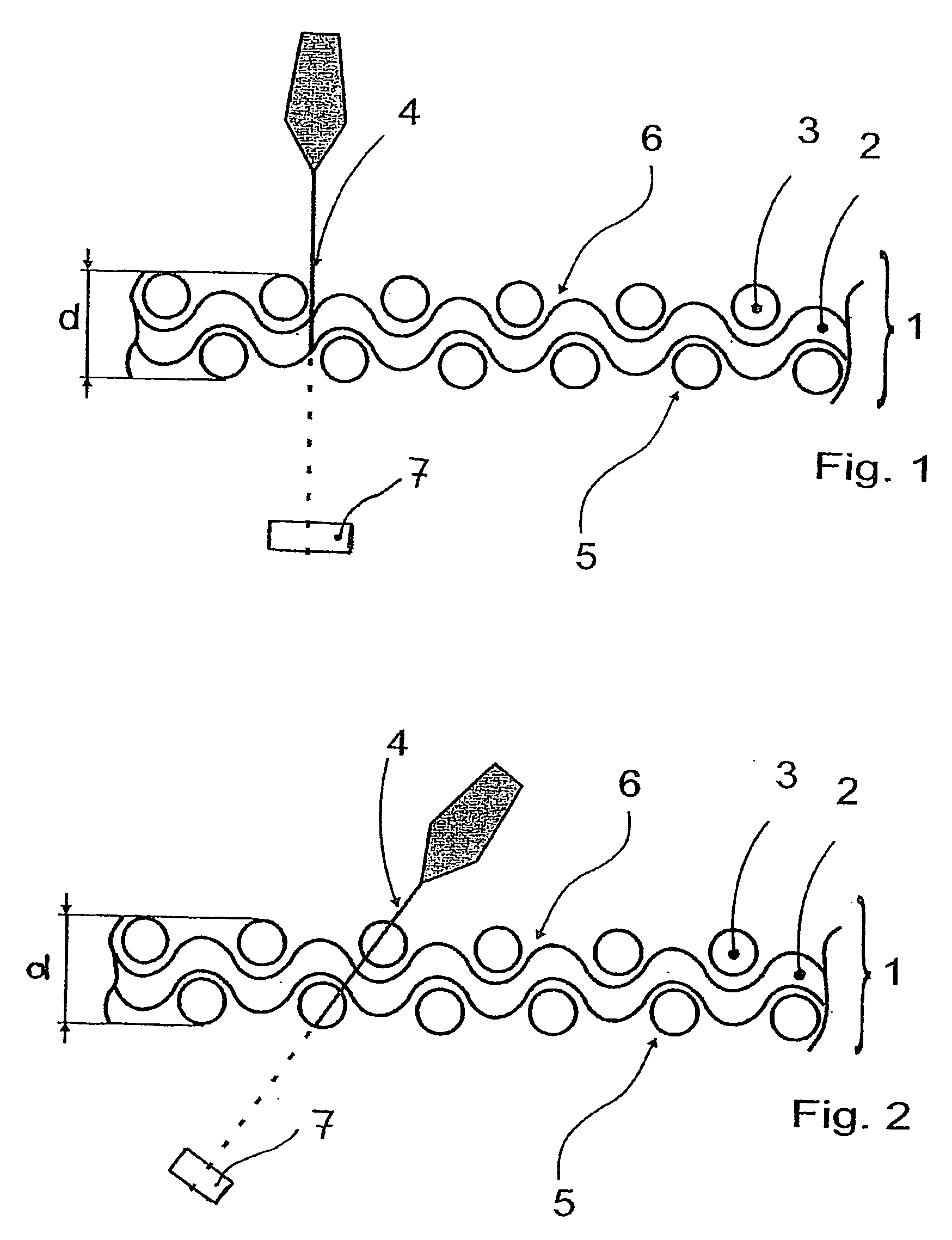Method for the introduction of an integrated predetermined rupture line in a planar expansive body
a predetermined rupture and planar expansion technology, applied in the direction of laser beam welding apparatus, transportation and packaging, vehicular safety arrangments, etc., can solve the problems of inability to generate a series of blind holes, inability to generate a line of determinate residual wall thickness in textile material, and inability to use laser methods. to achieve the effect of preventing the removal of small amount of material and preventing the overload of the detector
- Summary
- Abstract
- Description
- Claims
- Application Information
AI Technical Summary
Benefits of technology
Problems solved by technology
Method used
Image
Examples
Embodiment Construction
[0030] A first embodiment example shows the laser cutting of a woven material 1 comprising natural fibers. The material in question can be a covering material for a seat or the decorative layer for door paneling. FIG. 1 shows a section through a woven material 1 of this kind along a cross thread 2. A plurality of fibers bundled together forms a thread. A plurality of longitudinal threads 3 arranged next to one another are woven together with a plurality of cross threads 2 lying next to one another. The view in which the distances between the threads have been exaggerated clearly shows that a laser beam bundle 4, shown here as an individual beam, impinging on the woven material can penetrate the woven material 1 without striking a thread. At the other extreme, the laser beam bundle 4 could penetrate through the center of two threads lying on top of one another in another location. This means that although the woven material 1 has a substantially constant thickness d, the amount of ma...
PUM
| Property | Measurement | Unit |
|---|---|---|
| Angle | aaaaa | aaaaa |
| Length | aaaaa | aaaaa |
| Diameter | aaaaa | aaaaa |
Abstract
Description
Claims
Application Information
 Login to View More
Login to View More - R&D
- Intellectual Property
- Life Sciences
- Materials
- Tech Scout
- Unparalleled Data Quality
- Higher Quality Content
- 60% Fewer Hallucinations
Browse by: Latest US Patents, China's latest patents, Technical Efficacy Thesaurus, Application Domain, Technology Topic, Popular Technical Reports.
© 2025 PatSnap. All rights reserved.Legal|Privacy policy|Modern Slavery Act Transparency Statement|Sitemap|About US| Contact US: help@patsnap.com


